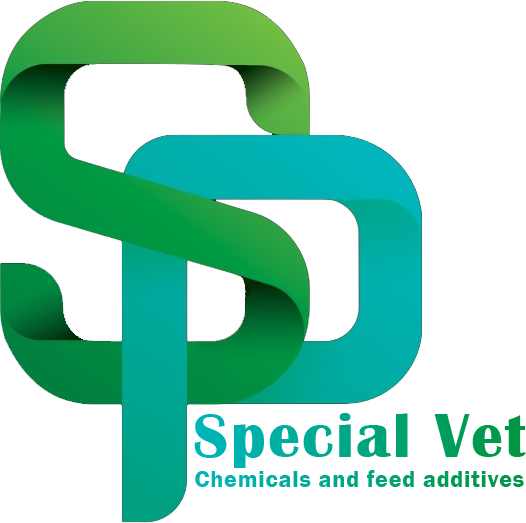
TEMPERATURE STRESS IN CATTLE
THE NEED FOR INCREASED PRODUCTIVITY IN PARALLEL WITH THE GROWING WORLD POPULATION
it is estimated that the world population, which is estimated to reach 9.6 billion in 2050, will increase the global demand for livestock products by 70%. In order to meet global demand, it is necessary to find and implement new methods that will increase productivity, in addition to spreading these practices, the necessary measures against known yield-reducing factors should be taken without neglecting, and the use of these protective measures should also be expanded.
Studies are underway that will reduce feed costs and enable the removal or reduction of feedstuffs used as human food from animal feed. Finding feedstuffs that are compatible with new and changing climatic conditions or increasing the use of feed through enzymes can be cited as examples of studies to increase yield. The struggle with temperature stress and the losses caused by it are among the most important examples that can be given to the second.
More than 50% of the cattle population in our world is located in the tropics, and it is estimated that temperature stress causes serious economic losses in about 60% of all dairy farms on a global scale. It should also be noted that the summer temperatures in the subtropical regions are also high enough to lead to temperature stress.
TEMPERATURE STRESS AND LOSSES IN MILK YIELD
Temperature stress can lead to a loss of yield of up to 600 or 900 kg of milk per cow during one lactation period. Stress can change metabolic activity, reduce feed intake, which ultimately leads to a decrease in milk yield. However, only 35% of the decrease in milk yield is due to reduced feed intake, while the 65% decrease is due to the direct physiological effect of heat stress.
Cattle can withstand temperatures as low as -37, but when temperatures are above 23, and high humidity, low air movement, combined with direct sun, can cause stress. Temperature stress causes body temperature to increase, and when body temperature rises significantly, feed intake, metabolism, live weight and milk yield decrease to help alleviate heat imbalance. The permanent decrease in lactation is proportional to the length of heat stress.
Most studies on heat stress in animal husbandry have focused mainly on temperature and relative humidity. Although temperature and relative humidity are the main causes of heat stress, a number of other conditions, such as the animal’s milk yield, pregnancy, determine the severity of heat stress.
Increasing milk yield increases the sensitivity of cows to temperature stress. High-yielding cows are more susceptible to heat stress than low-yielding cows, because feed intake and milk production, which will support a high level of milk production, generate more internal heat. It has been concluded that there are 10-40% decreases in milk yield in summer compared to winter for Holstein cows, which are mainly used in milk production in the world.
Temperature stress does not only negatively affect lactating cows, heat stress in the dry period negatively affects the development of the mammary gland before childbirth, which ultimately leads to a decrease in milk yield in subsequent lactation. While keeping the milk yield at a high level in the summer, it is necessary to implement all environmental regulations that can be made to protect the health of animals, as well as feeding solutions that will alleviate the effects of temperature stress.
TEMPERATURE STRESS AND GENERAL FERTILITY LOSSES
The negative relationship between temperature stress and reproductive performance in dairy cows has been Decoupled. Temperature stress can cause reproductive problems such as poor semen quality, low birth weights, and weaken the immune system.
Fertility in dairy cows is defined as the ability to conceive and maintain pregnancy if the animal is inseminated at the appropriate time according to ovulation. Temperature stress seriously reduces pregnancy rates in dairy cows. In the months when the ambient temperatures are high, the rate of non-conception is between 40% -50%, while in the months when the ambient temperatures are low, it Decays below 10%. High temperatures affect the developing embryo and can lead to lower pregnancy rates.
It is reported that high temperatures reduce conception rates in cows more than in heifers, because cows under conditions of temperature stress, unlike heifers – due to the internal heat generated by the milk production process – are more unable to maintain normal body temperature.
Heat stress can compromise reproductive events by disrupting the estrus – cycle cycle, altering ovarian follicular development, compromising oocyte adequacy, and inhibits embryonic development. Holstein heifers exposed to heat stress from the onset of heat had an increased proportion of abnormal and developmentally impaired embryos compared to heifers preserved in a thermo-neutral state. Premature calf births represent a loss in reproductive efficiency in normal cattle populations. Spontaneous abortions of dairy cows reduce lifetime milk productivity by increasing the number of potential female herd replacements. Heat stress in late pregnancy can also cause cows to calve 10-14 days before the due date.
FEEDING SOLUTIONS AGAINST TEMPERATURE STRESS
In tropical and subtropical regions, where cows are exposed to temperature stress, livestock farming will continue both due to the density of the population here and the feed production carried out here. The way to maintain livestock by increasing productivity under these conditions, which cannot be changed, is to optimize housing conditions and provide auxiliary feeding solutions against temperature stress.
At high temperatures; the high fiber helps the digestion of food, which helps in the digestion of cows and internal heat generation, which reduces the cellulosic bacteria stimulate stand the test of subclinical acidosis of polyunsaturated fatty acids which help to convert saturated fat to the bloodstream of nutrients lost through sweating and urination, and increased potassium to facilitate the transition of the animals continued throughout the year in the herd and regain feed additives yield will assist in the provision of high fertility rates.
